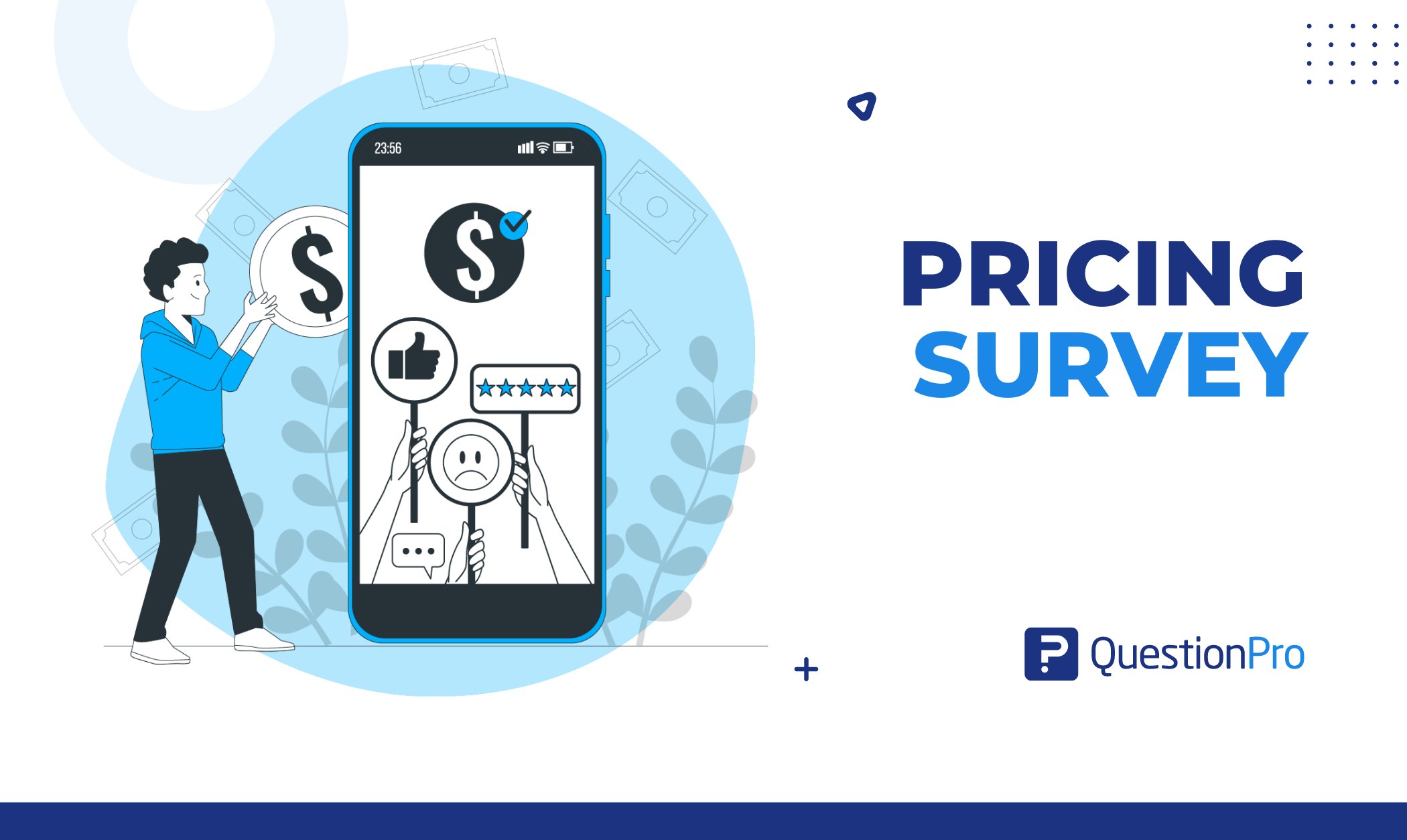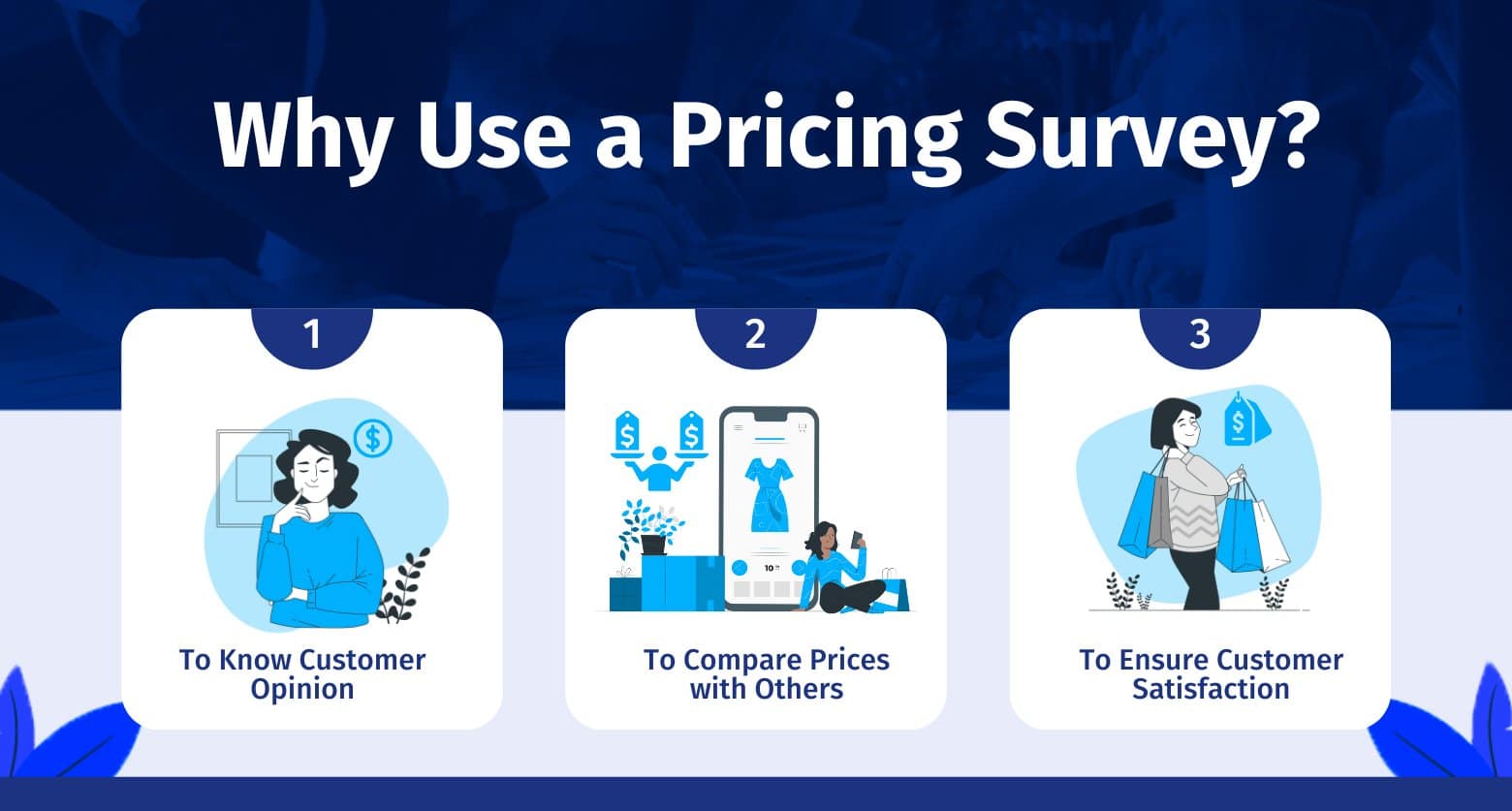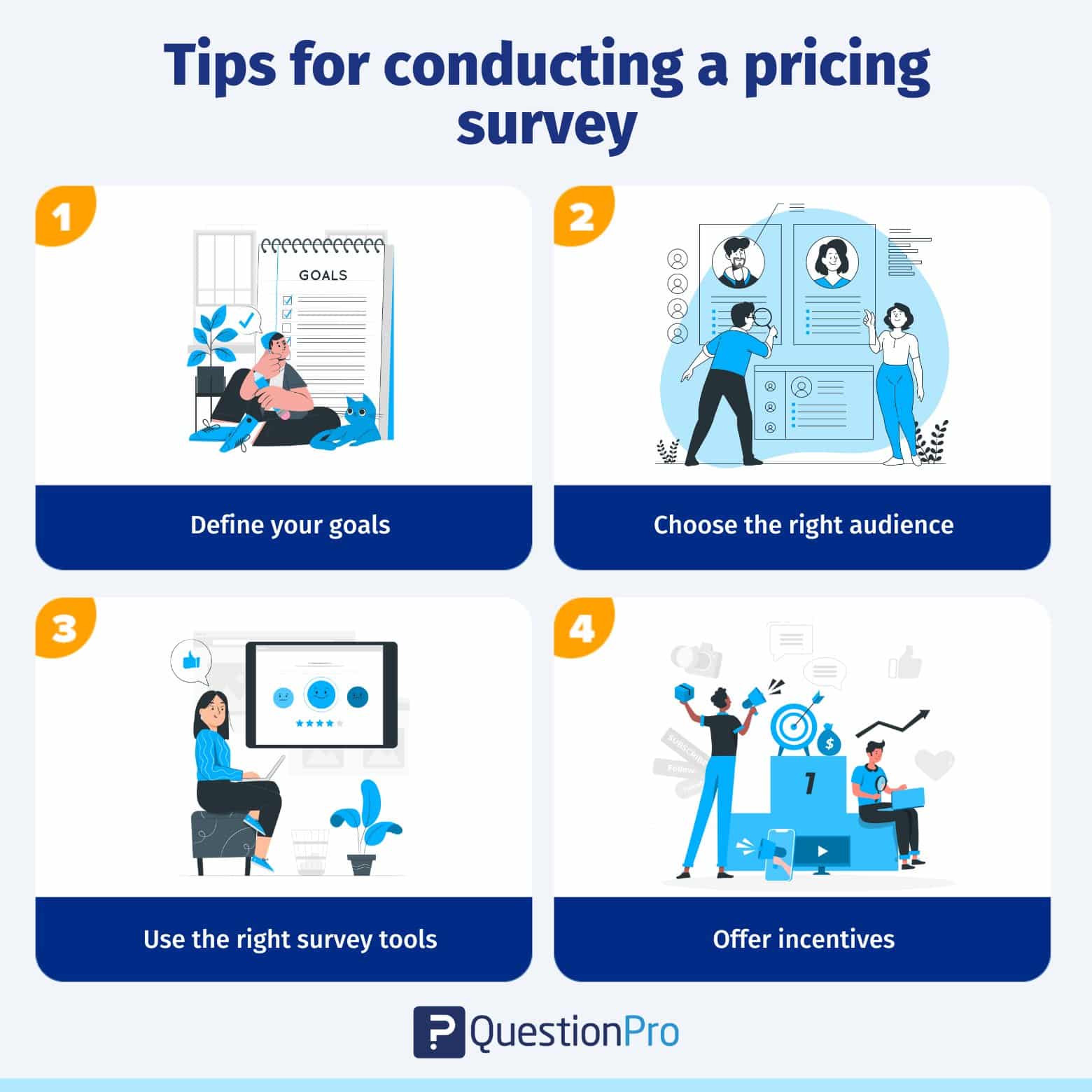
A pricing survey will inform you how much customers value your product and how much they are willing to pay for it.
Pricing surveys help establish your best price based on real facts from your target customers rather than speculating what price might be profitable based on shifting rival prices or what looks like a fair markup on your product or service.
Whether you are launching a new product or service or adjusting your price strategy, conducting pricing surveys can help you make informed pricing decisions and achieve your business objectives.
In this blog, we’ll talk about some key methods to conduct a pricing survey and provide you with some ideas to help you get the most out of your research
What is a Pricing Survey?
A pricing survey is a research approach used to discover the best price for a product or service. Pricing surveys give your target market questions directly to find out how much they are willing to pay, what characteristics affect sales the most, how much they think your product or brand is worth, etc.
Pricing surveys can be conducted in various ways, but all pricing research has the same goal: to determine how real potential buyers value a product or service.
Prices for products and services are decided with the help of data from pricing research. This data can then be utilized to calculate predicted revenue and profit more accurately.
Why Use a Pricing Survey?
A pricing survey can provide helpful data on how your customers evaluate the value of your products or services and how much they are ready to pay for them. Here are some of the most important reasons why you should do a price survey:

- What Customers Think About Your Price
A pricing survey can tell you how customers see the value of your products or services, which can help you figure out how to price them. You may maximize sales and profits by understanding your customers’ willingness to spend.
- Compare Your Prices to Others
It will assist you in understanding how your prices compare to those of your competitors. This can assist you in identifying places where you may be able to raise pricing or regions where you may need to decrease rates in order to compete.
- To Ensure Customer Satisfaction
By understanding how customers see the value of your products or services, you can set prices that meet their expectations. It can improve sales and revenue curves by increasing customer satisfaction and loyalty.
How to Include Questions About Prices in a Pricing Survey?
How you ask your pricing questions depends on the sort of analysis you want to undertake and the answers you are looking for.
Some easy techniques for asking pricing questions can give you a general idea of where your price should be. Then there are more advanced pricing analysis tools that can tell you exactly how much value each element of your product brings and how much more you can charge for it.
Your pricing strategy will affect the survey questions you use to collect pricing information. If you employ a direct pricing strategy, your price questions will center on how much customers will pay for a product.
However, if you utilize an indirect pricing strategy, your inquiry will be based on the product’s worth rather than cost.
Methods to Conduct a Pricing Survey
If you’re thinking about doing a pricing survey, there are many different methods you may use to find out what customers want and how they act when it comes to prices. The best way to do pricing surveys will depend on your goals, the people you want to reach, and the resources you have.
In this section, we’ll look at some of the most popular methods for conducting pricing surveys and pick the best one for your specific circumstances.
Van Westendorp Pricing Studies
The Van Westendorp Pricing Model, commonly known as the price sensitivity meter, assists you in pricing a product depending on the perceived value of your customers. It is one of the most adaptable and accurate willingness-to-pay pricing models.
Van Westendorp price sensitivity meter establishes the acceptable range that is appropriate and explains why other rates are either too high or too low. This method asks four questions to identify the appropriate pricing range for your products.
Pros
- Van Westendorp Surveys are simple to implement.
- It is not limited to setting the same price range; rather, it allows you to decide the acceptable price range.
Cons
- It is an isolated pricing strategy; it does not compare product costs to those of opponents, which is an important consideration for most customers.
Price Rating Scales
The price rating scale method asks survey respondents how likely they are to pay a certain amount for a product or service. It’s one of the easiest pricing methods; all you have to do is estimate your customer’s readiness to pay a given amount.
Price rating scales analyze the value customers place on a product; customer-acceptable pricing is how much the product is worth to them. Customers are more likely to buy the product if the price is acceptable to them. If it is not, the purchase is improbable unless the thing is an absolute requirement with no alternatives.
Example: How likely are you to pay $799 for the Galaxy S2312?
- Very likely
- Somewhat likely
- Neutral
- Unlikely
- Very unlikely
Pros
- It is simple to implement.
- It reveals a direct relationship between sales and price.
Cons
- You have to choose the prices yourself, and the best price might not be one of them.
Gabor Granger Price Sensitivity
The Gabor-Granger pricing method determines the highest price a customer will pay for a product or service.
Participants are asked if they would buy a product for a certain price. If they refuse, the algorithm offers them a lower price point and asks if they are willing to pay it. It means the price changes according to the customers’ demand curve.
The price variation process continues until either participant says yes or the product’s lowest price is reached. If a participant chooses yes, they will be shown a greater price; this process will be continued until the product hits its maximum price or the respondent chooses no.
Pros
- It enables you to estimate the percentage of customers willing to pay at a given highest price point.
- Enables you to identify various price points at which customers are most likely to pay for a product the price elasticity at which you will generate the most revenue.
Cons
- Enables you to identify the price at which customers are most likely to pay for a product, and the following price points at which you will generate the most revenue.
Conjoint Analysis
The conjoint analysis measures how much customers appreciate different parts of your products and services. It’s one of the most involved ways to set multiple price ranges, but using market research tools helps randomize the options respondents have to choose from, making the study easier to perform.
This strategy breaks your product down into its main aspects and asks respondents conjoint analysis survey questions to pick the combination of features they like most. Price, design, brand, and other factors may be considered.
Pros
- Allows you to determine which product elements are most important to your customers.
- Easy competition analysis by comparing your product profile to the competitor’s.
Cons
- Even with tools to randomize product profile orders, each profile requires time to set up.
Tips for Conducting a Pricing Survey
To conduct a successful pricing survey, you must have a clear plan in place and employ the appropriate Pricing Analytics Software and approaches to obtain the most accurate and actionable data. In this section, we’ll give a few tips to assist you in running price surveys that lead to relevant findings.

Define your goals
It is essential to define your goals before conducting a price survey. It will assist you in developing the appropriate questions and structuring your survey to provide the necessary information.
Choose the right audience
Make sure the respondents you select for your survey are typical of your market segments. It ensures that the results you obtain are correct and may be utilized to drive your pricing approach.
Use the right survey tools
Numerous online survey tools are available that make it simple to develop and conduct a product’s optimal price point. QuestionPro, SurveyMonkey, Qualtrics, and Google Forms are other popular possibilities.
Offer incentives
Incentives like discounts or freebies can motivate people to take your survey and provide honest feedback.
How QuestionPro Helps in Pricing Survey
QuestionPro is an online survey application that can be quite helpful for doing pricing surveys. Here are some ways in which QuestionPro might help you with your price survey:
Customization
QuestionPro allows you to customize your survey questions to your specific price survey requirements. To obtain the most accurate and thorough feedback from your survey participants, you can use a range of question types, such as multiple choice, rating scales, and open-ended questions.
Targeted Audience
QuestionPro gives you access to a panel of respondents who may be specifically targeted to your price survey needs. It ensures that you obtain survey responses from people relevant to your target market.
Advanced Analysis
QuestionPro’s powerful analytic capabilities enable in-depth analysis of your price survey results. You can acquire insights into customer price preferences and behavioral pricing using real-time reporting, cross-tabulation, and sentiment analysis.
Mobile-friendly surveys
QuestionPro surveys are mobile-friendly, so survey participants may effortlessly reply to your survey using their smartphones or tablets. It improves the chances of receiving more responses and improves data quality.
Integration
QuestionPro integrates with additional applications such as Salesforce, Google Analytics, and Mailchimp, making it simple to manage and incorporate pricing survey data into your overall pricing strategy.
Conclusion
QuestionPro can help you conduct a pricing survey efficiently and effectively. QuestionPro offers a full solution for your price survey needs with its configurable survey questions, targeted audience, extensive pricing analytics, mobile-friendly surveys, and integration features.
Using QuestionPro, you may acquire significant insights into customer pricing preferences and behavior, allowing you to make more informed customer purchase decisions. Take advantage of the chance to improve your price strategy; start your pricing survey with QuestionPro today!
Frequently Asked Questions (FAQs)
Answer: A pricing survey helps you understand customer value perception, find the right price point, and stay competitive in the market.
Answer: Conduct a pricing survey every 6–12 months, or whenever launching new products or entering a new market.
Answer: Popular methods include Van Westendorp, Gabor-Granger, Conjoint Analysis, and Willingness-to-Pay (WTP) surveys.
Answer: Yes, it can reveal how your prices compare to competitors and whether customers see your product as more or less valuable.
Answer: Avoid biased questions, small sample sizes, and skipping follow-up analysis. Make sure your pricing questions are clear and neutral.







